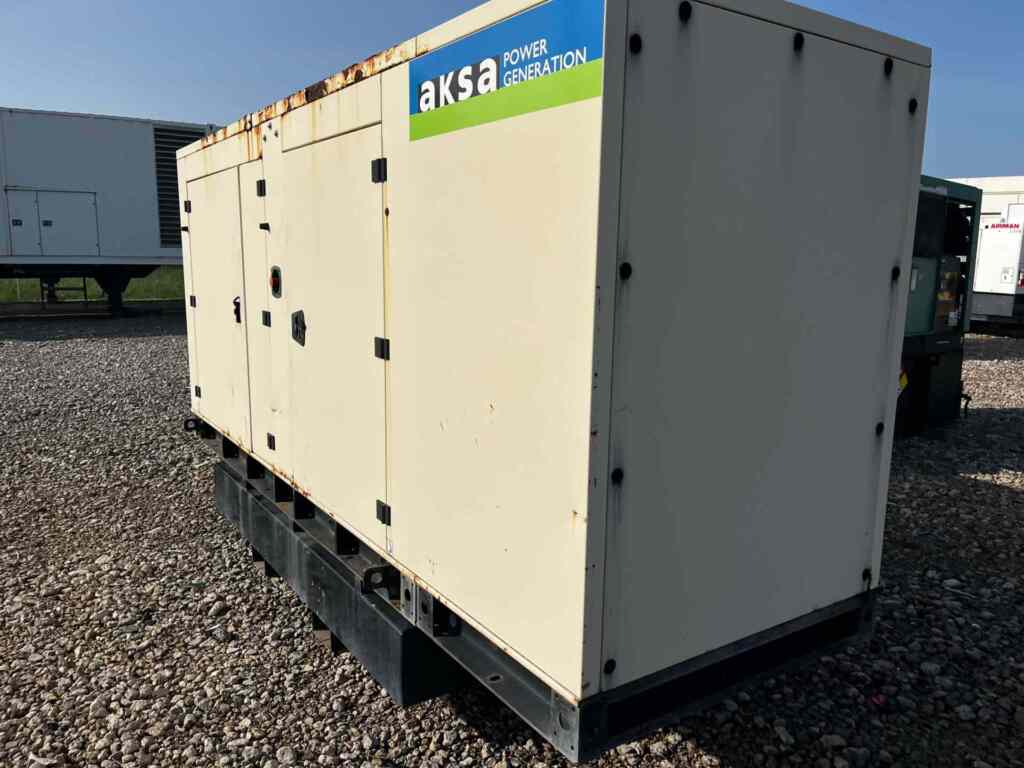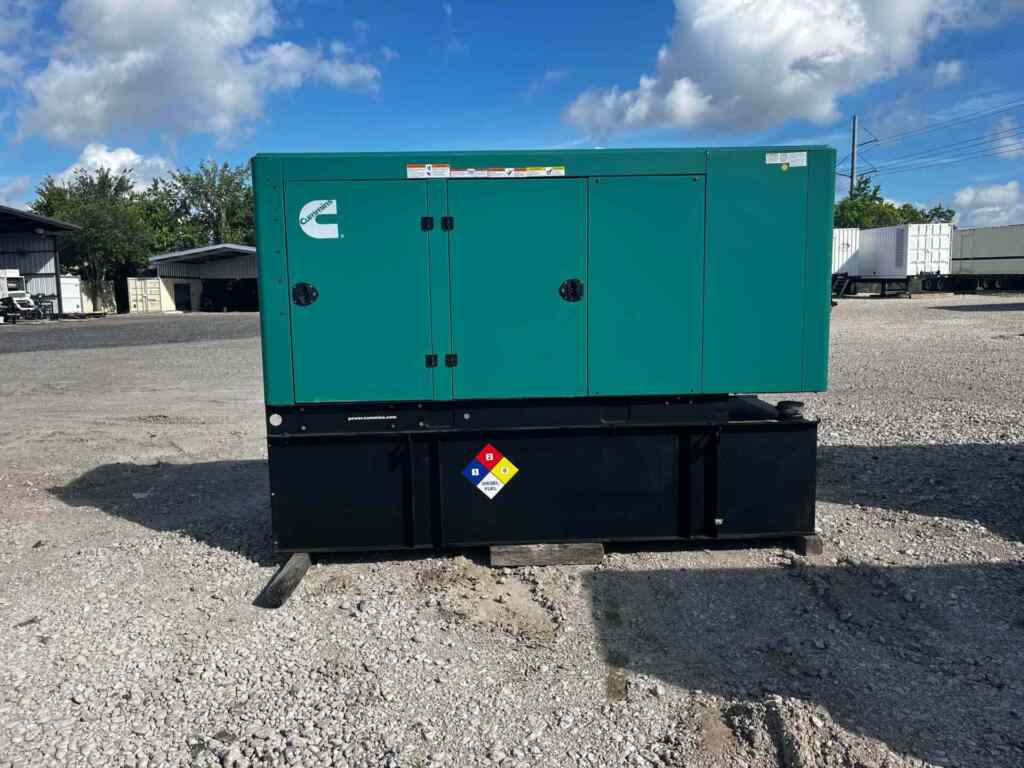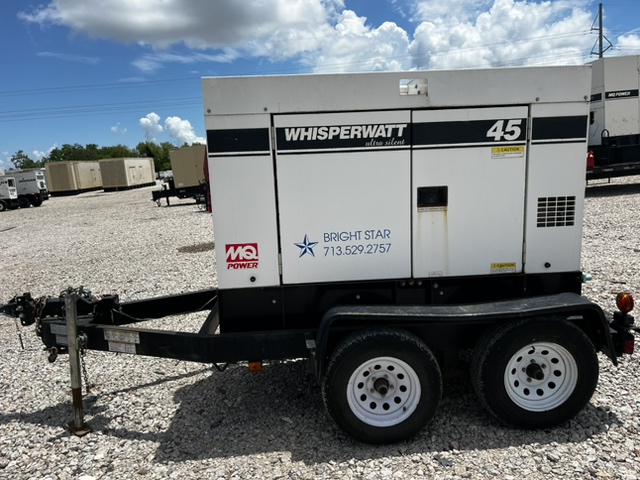The decision to install a commercial standby generator in your office building can be an expensive one, but the peace of mind it will bring is immeasurable. You will need to understand basic and advanced generator placement requirements and regulations. No matter what causes a power outage, unplanned downtime means unsafe working conditions, the loss of electronic data and other assets, and significant financial damages. A permanently installed commercial standby generator will keep critical systems up and running through outages, and will more than pay for itself when your business remains up and running during an outage.
However, there are several things to consider during a commercial generator installation. Two of the most important things to keep in mind during the installation process are the required generator clearances and generator placement requirements for your area. We will discuss both below.
What Does A Commercial Generator Installation Cost?
Unfortunately, this question is difficult to answer because no two buildings are exactly alike! When installing a standby commercial generator, many different factors come into play, including the building’s age, location, uses, and layout. Broadly speaking, the cost of a generator installation for a very small commercial building can start at $3,000 while the installation of a 100kW generator at a much larger facility can cost more than $100,000. In order to guarantee that your generator is installed correctly, choose a reliable installer with a proven track record and experience helping clients choose the best generator for their space. At bare minimum, you will need a licensed electrician for your installation and a plumber if you need to run a gas line for your commercial generator installation. However, a certified installer is often necessary in order for the generator manufacturer to honor their warranty, so keep that in mind before hiring your installer.
When considering an industrial generator installation, additional complexities such as higher power demands and more stringent safety regulations can further impact costs. Be sure to consult with an experienced provider who specializes in industrial generator installation to ensure compliance with all relevant codes and standards.
Placing Your Generator: Six Things To Consider In A Commercial Building
 Plan for proper generator clearance to ensure ventilation, maintenance access, and safety compliance.
Plan for proper generator clearance to ensure ventilation, maintenance access, and safety compliance.There are six very important things to consider before your commercial generator installation. The most important consideration, however, is determining where to install your standby generator – indoors vs. outdoors. Once you make that decision, you can follow the correct generator placement requirements for your area. To decide where to install your generator, consider the following factors:
- What is your climate like? If flooding is common in your area, you will want to avoid the basement. If it tends to be windy, you may struggle with debris that clogs the generator vents and overheats the unit. Also, make sure you can easily access the generator in the event of an extreme weather situation so that your investment does not go to waste.
- Does your area have local sound ordinances? These types of rulings may affect how closely you can place the generator to other buildings and may impact what size generator you use. Larger generators typically mean louder generators, although newer models will have sound-dampening features, especially for commercial installations.
- Where is your building’s electrical room? It is a good idea to install your generator as close as possible to this room to minimize the amount of conduit you need to run to connect the unit to this room. If your generator has an automatic transfer switch, you will want to install it in the electrical room as well.
- Do you have enough space inside to install the generator? Commercial generators can measure anywhere from 10 to 25 feet long and need three feet of clearance on all sides at minimum. Even if you have the physical space, consider whether there is enough distance between the generator and wherever your day-to-day operations occur to make sure the sound is not overwhelming.
- How old is your building? Retrofitting space for a generator in an old building can be difficult – and sometimes very costly. The generator needs adequate ventilation and exhaust pathways, as well as a utility hookup if it runs on natural gas. Installing a generator in new construction is much easier. If your building is old, make sure your installer can retrofit the space accordingly.
Power Requirement Assessments is a Key Factor to Consider
Power requirements assessment is a critical initial step in planning the installation of an industrial generator. This process begins with calculating peak load demands, which involves determining the maximum power needed during the highest usage periods. Accurately assessing peak load demands ensures that the generator can handle the most intense operational periods without failure. Additionally, it’s essential to differentiate between essential and non-essential loads. Essential loads are those that must be maintained to ensure safety, critical operations, and compliance with regulations, such as emergency lighting, medical equipment, and key machinery, whereas non-essential loads can be temporarily reduced or disconnected during power outages. Moreover, future scalability and potential load increases must be considered to accommodate business growth or expanded operations. This forward-looking approach ensures that the generator system remains effective and reliable, avoiding costly upgrades or replacements in the near future. By thoroughly assessing power requirements, businesses can ensure continuous operation, safety, and efficiency during power outages.
Clearances And Codes For Commercial Standby Generators
Once you have chosen a location for your commercial standby generator, you will need to consult your local building code authority for the necessary permits and required generator clearances for your area. Local ordinances may vary from standard codes and may possibly override the manufacturer’s instructions for a commercial generator installation. Experienced electricians and plumbers know how to work with local building departments to resolve any conflicts that may arise between installation instructions and local building codes.
In general, however, it is good to remember these three key rules of thumb:
- Leave five feet between generators, walls, and any other obstructions.
- The clearance from the generator to open the door for servicing should be at least 3’6”.
- Generators must always have adequate airflow to operate safely.
Working Through A Successful Commercial Generator Installation
Each commercial generator installation and installation site will have different requirements, but the installation process will be very similar no matter where your facility is located. Make sure you work with an experienced professional to determine the physical location of your generator, the foundation that is needed, and the accessibility needed for maintenance workers and fuel delivery services (if applicable). An expert can help guide you through the necessary steps and paperwork required to install your new generator and your business will remain up and running even if the grid goes down.
 Turnkey Industries offers a variety of high-capacity
Turnkey Industries offers a variety of high-capacity 





